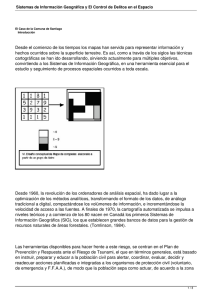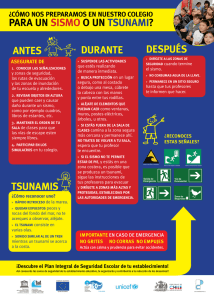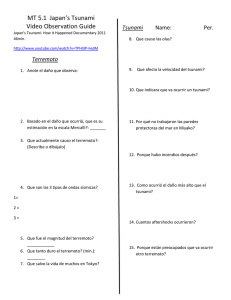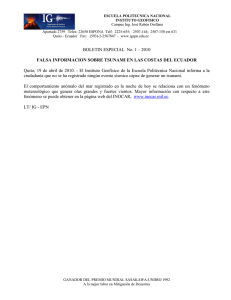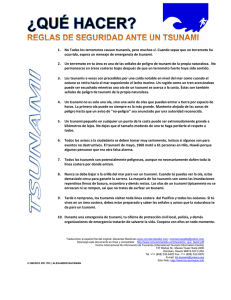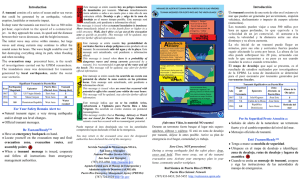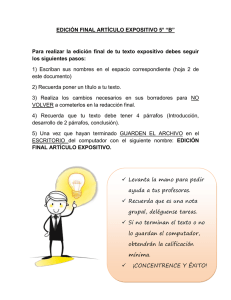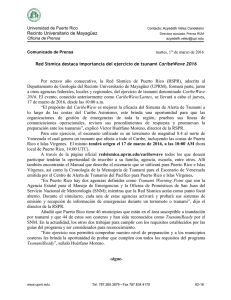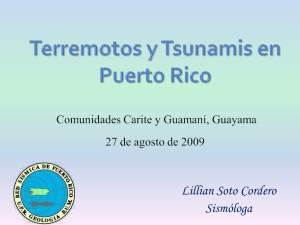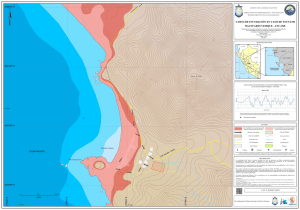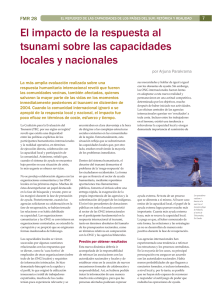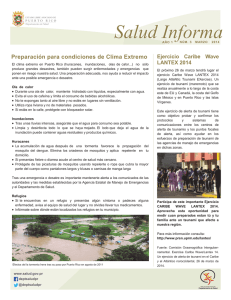Disfrute su visita y esté preparado!
Anuncio
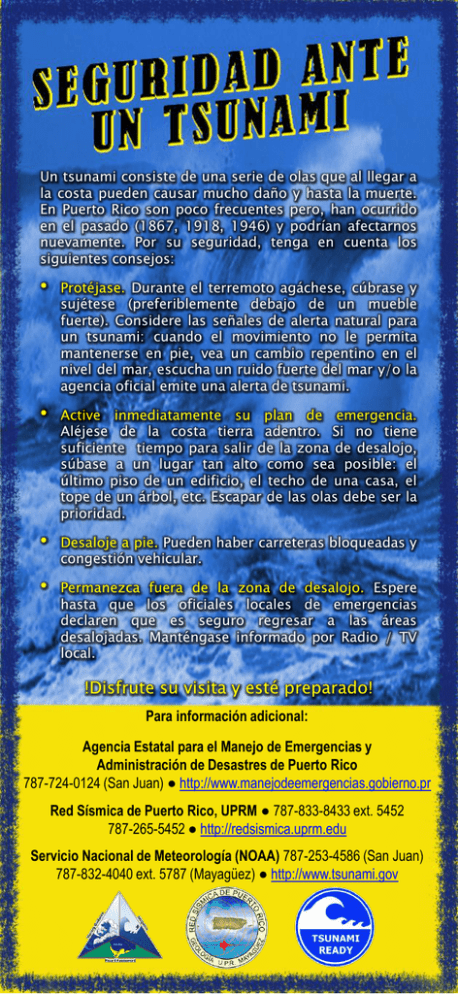
Un tsunami consiste de una serie de olas que al llegar a la costa pueden causar mucho daño y hasta la muerte. En Puerto Rico son poco frecuentes pero, han ocurrido en el pasado (1867, 1918, 1946) y podrían afectarnos nuevamente. Por su seguridad, tenga en cuenta los siguientes consejos: • Protéjase. Durante el terremoto agáchese, cúbrase y sujétese (preferiblemente debajo de un mueble fuerte). Considere las señales de alerta natural para un tsunami: cuando el movimiento no le permita mantenerse en pie, vea un cambio repentino en el nivel del mar, escucha un ruido fuerte del mar y/o la agencia oficial emite una alerta de tsunami. • Active inmediatamente su plan de emergencia. Aléjese de la costa tierra adentro. Si no tiene suficiente tiempo para salir de la zona de desalojo, súbase a un lugar tan alto como sea posible: el último piso de un edificio, el techo de una casa, el tope de un árbol, etc. Escapar de las olas debe ser la prioridad. • Desaloje a pie. Pueden haber carreteras bloqueadas y congestión vehicular. • Permanezca fuera de la zona de desalojo. Espere hasta que los oficiales locales de emergencias declaren que es seguro regresar a las áreas desalojadas. Manténgase informado por Radio / TV local. !Disfrute su visita y esté preparado! Para información adicional: Agencia Estatal para el Manejo de Emergencias y Administración de Desastres de Puerto Rico 787-724-0124 (San Juan) ● http://www.manejodeemergencias.gobierno.pr Red Sísmica de Puerto Rico, UPRM ● 787-833-8433 ext. 5452 787-265-5452 ● http://redsismica.uprm.edu Servicio Nacional de Meteorología (NOAA) 787-253-4586 (San Juan) 787-832-4040 ext. 5787 (Mayagüez) ● http://www.tsunami.gov A tsunami consists of a series of waves, when they reach the coast they can cause serious damage and also death. In Puerto Rico tsunamis are very infrequent but, they have occurred in the past (1867, 1918, 1946) and could affect us again. For your safety, consider the following tips: • Protect yourself. During an earthquake drop, cover and hold (if possible under a sturdy furniture). Take into account natural tsunami warning signs: when the shaking is so strong you can barely stand, see a drastic change in sea level, hear a loud noise from the sea and/or the official agency has issued a tsunami alert. • Activate your emergency plan immediately. Run inland away from the coast. If you do not have enough time to move out of the evacuation zone, go to the highest place you can find: the top floor of a building, the roof of a house, up a tree, etc. Getting out of harm’s way should be your priority. • Walk, don’t drive. There will be traffic jams and roads will be blocked. • Stay outside of the evacuation zone. Wait for the emergency officials declare it is safe before returning to the evacuated areas. Stay tuned to local Radio / TV. Be prepared and enjoy your stay! For more information: Puerto Rico State Emergency Management Agency 787-724-0124 (San Juan) ● http://www.manejodeemergencias.gobierno.pr Puerto Rico Seismic Network, UPRM ● 787-833-8433 ext. 5452 787-265-5452 ● http://redsismica.uprm.edu National Weather Service (NOAA) ● 787-253-4586 (San Juan) 787-832-4040 ext. 5787 (Mayagüez) ● http://www.tsunami.gov
